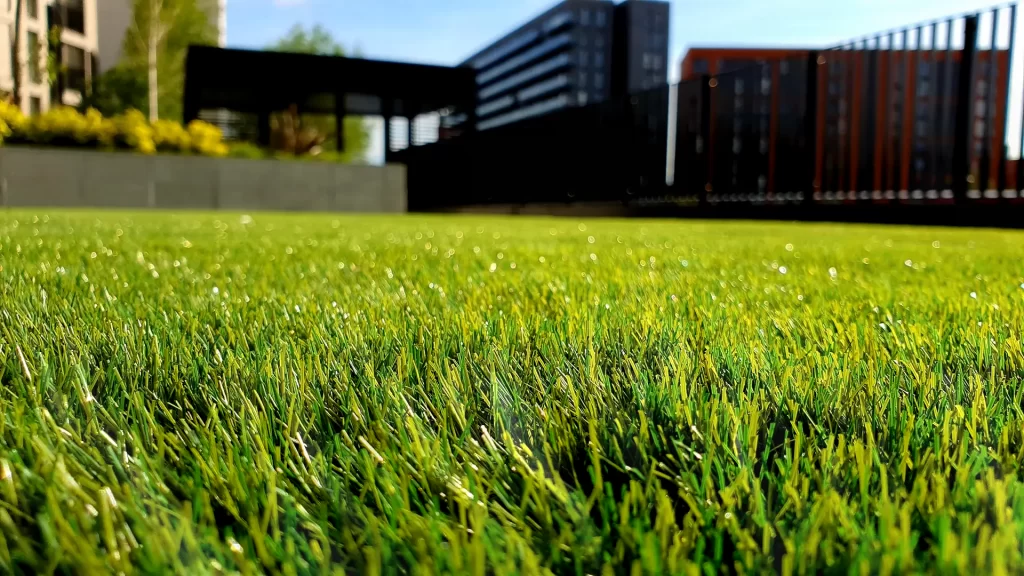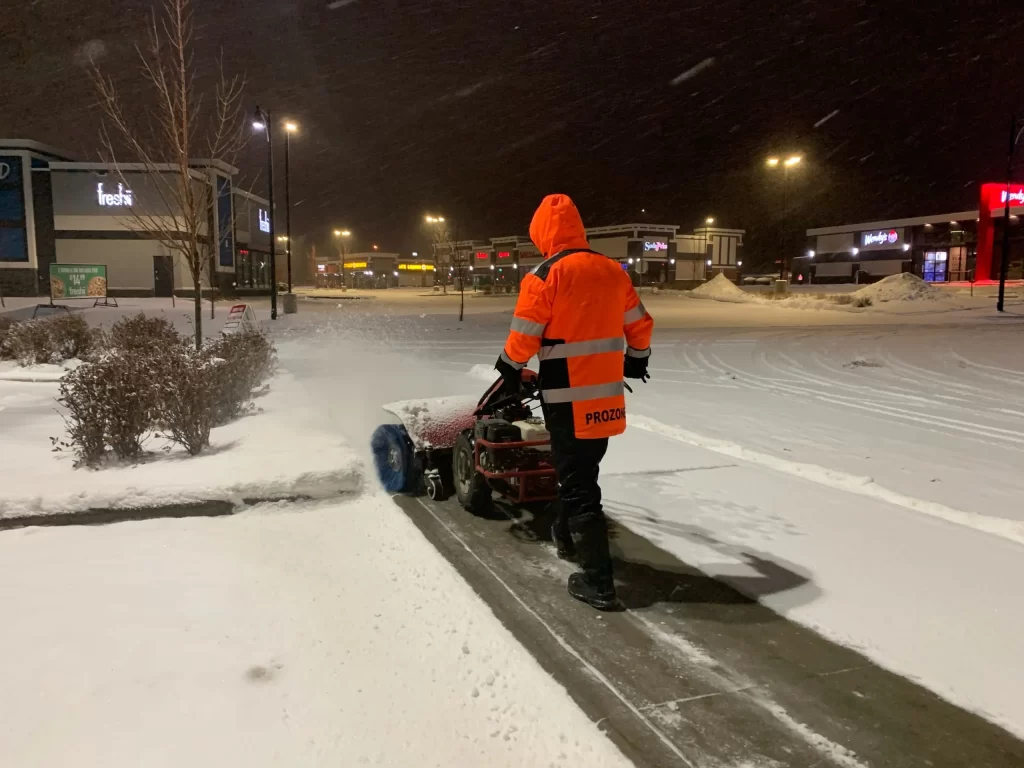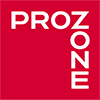In recent years, artificial grass has become a leading choice for Canadian homeowners and businesses looking to reduce maintenance costs and adopt more sustainable landscaping solutions. At PROZONE, we specialize in high-quality synthetic turf that not only looks stunning all year round but also offers real environmental and practical benefits — even during harsh Canadian winters.
Artificial grass offers more than just aesthetic value — it plays a crucial role in long-term water conservation and eco-responsible property management. In this expert guide, we’ll explore how artificial grass contributes to environmental protection, how it performs during the winter season, and answer key questions you may have before making the switch
Table of Contents
- Why Artificial Grass Is a Smart Eco-Friendly Choice
- Artificial Grass Winter Care: How to Maintain Your Lawn During Snow and Frost
- Common Questions About Artificial Grass
- Conclusion: Is Artificial Grass Worth It in the Canadian Climate?

Why Artificial Grass Is a Smart Eco-Friendly Choice
How Artificial Grass Helps Reduce Water Usage
One of the biggest advantages of artificial grass is its impact on water conservation. Natural lawns can consume up to 8 million gallons of water annually, especially during dry summer months.
In contrast, synthetic turf requires virtually no irrigation — making it a sustainable solution for communities facing water restrictions or rising utility costs. With climate change causing more frequent droughts, installing artificial grass is becoming not just a preference but a necessity for many property owners.
Artificial lawns can contribute to overall municipal water savings, especially when implemented at scale in urban and suburban areas. At PROZONE, we prioritize environmentally conscious designs that deliver long-term value for both clients and the planet.
Environmental Benefits Beyond Water Conservation
Artificial turf also eliminates the need for fertilizers, pesticides, and herbicides, which can leach into local water sources and harm ecosystems. Without chemicals, your outdoor space becomes safer for children, pets, and surrounding wildlife.
With less mowing and no need for gas-powered lawn tools, you also reduce your carbon footprint. That means fewer emissions, reduced noise pollution, and a quieter, greener environment around your home or business.
Furthermore, synthetic grass doesn’t attract pests like ticks or grubs, reducing the need for chemical pest control. This supports broader biodiversity goals, especially in urban areas where native plant and insect populations are already under stress.
Artificial Grass vs. Natural Grass: A Cost and Maintenance Comparison
While natural grass may appear cheaper upfront, the long-term costs add up quickly — from watering and fertilization to mowing and seasonal reseeding. These routine expenses not only drain your wallet but also take up your time and effort.
Artificial grass, on the other hand, requires minimal maintenance. With proper installation and occasional cleaning, PROZONE synthetic turf systems can last 15–25 years.
This durability translates into significant financial savings over time, especially for homeowners managing large outdoor areas. By investing once, you can eliminate recurring lawn-care costs for decades to come.
Artificial Grass Winter Care: How to Maintain Your Lawn During Snow and Frost
Is Artificial Grass Good for Cold Climates?
Absolutely. Our artificial grass products at PROZONE are specifically engineered for North American climates — including extreme cold, snow, and ice.
Unlike cheaper imitations, our turf maintains its structure and color throughout winter without cracking or warping. High-performance backing and UV-resistant fibers ensure that your lawn stays intact despite drastic temperature shifts.
Even when frozen, artificial turf retains its flexibility and returns to its natural shape once temperatures rise. You can enjoy peace of mind knowing your lawn will look just as green in spring as it did in fall.

How to Prepare Your Artificial Grass for Winter
Before winter sets in, we recommend clearing your lawn of debris such as leaves, twigs, and pet waste. A quick sweep with a broom or blower will help prevent organic buildup that may affect drainage in the spring.
It’s also a good idea to check the infill distribution and refresh it if needed, especially in high-traffic zones. If you have pets, consider using an enzyme-based cleaner to neutralize bacteria before the snow arrives.
Taking care of your artificial grass in autumn ensures that it requires virtually no attention during winter, which is ideal for property owners with busy schedules.
Should You Remove Snow from Artificial Grass?
In most cases, it’s best to let snow melt naturally. If you need to create a walkway or clear space for pets, use a plastic shovel or soft-bristle broom — never metal tools.
Light snow can also be cleared with a backpack blower, especially if you want quick access to certain areas. The key is to avoid damaging frozen blades or disturbing the infill, which helps keep the grass upright and cushioned.
Frequent clearing isn’t necessary, which adds to the convenience and low-maintenance appeal of artificial turf during the colder months.
What Not to Do: Salt, Metal Shovels and Other Mistakes
We strongly advise against using salt or chemical deicers on your artificial grass. These substances can accumulate in the infill, block drainage, and encourage the growth of mold or bacteria.
Metal snow shovels can also tear or flatten the turf fibers, especially when the surface is frozen. It’s important to use soft tools and gentle methods to extend the life of your lawn and maintain its natural appearance.
If you’re unsure whether a winter maintenance method is safe, contact PROZONE for expert advice tailored to your turf type and regional weather patterns.
Spring Cleanup Tips After a Harsh Canadian Winter
Once the snow melts, it’s a good time to give your artificial lawn a thorough cleaning. Focus on areas near sidewalks or roads, where gravel and debris may have accumulated.
Use a turf rake, push broom, or power brush to fluff the grass and remove any unwanted material. This restores its upright posture and refreshes its color for the growing season.
If you notice compacted infill or drainage issues, spring is the best time to make adjustments before summer use increases. A well-maintained synthetic lawn will stay fresh, clean, and lush for years to come.
Common Questions About Artificial Grass
Why Are People Getting Rid of This Grass?
Some people replace older artificial grass due to poor installation, low-quality materials, or outdated aesthetics. Often, early synthetic grass products didn’t offer the same durability, realism, or eco-certifications available today.
At PROZONE, we offer premium turf systems with modern design, advanced drainage, and durability tested in Canadian weather. Our clients typically upgrade rather than abandon artificial turf — replacing outdated systems with newer, longer-lasting models that better meet their needs.
It’s also worth noting that perceptions are shifting as new technologies address past concerns like heat retention or surface hardness, making artificial grass more appealing than ever.
What Is the Downside of Artificial Grass?
Although artificial grass requires less maintenance, it does involve a higher upfront cost. Poor-quality products can also degrade over time, especially in extreme conditions.
That’s why it’s crucial to invest in premium turf and ensure it’s installed by professionals like our team at PROZONE. Another potential drawback is reduced permeability if infill becomes compacted, but this can be managed with seasonal brushing and occasional adjustments.
When properly chosen and maintained, artificial grass offers far more benefits than drawbacks — particularly in climates like Canada’s where natural lawns struggle to thrive year-round.
How Long Does Artificial Grass Last?
High-quality artificial grass from PROZONE can last anywhere from 15 to 25 years with proper care. The lifespan depends on the product, installation quality, foot traffic, and climate.
Regular light maintenance — especially before and after winter — helps extend durability and preserve appearance for decades. Unlike natural grass, which may require reseeding every few years, synthetic turf remains consistent and resilient over time.
This makes it an ideal choice for both residential and commercial applications where performance and aesthetics matter over the long haul.
Is Artificial Grass Worth It in the Canadian Climate?
With its unmatched durability, minimal maintenance, and clear environmental benefits, artificial grass is an excellent landscaping solution for Canadian homeowners and commercial properties. It handles everything from extreme heat to heavy snow, offering year-round beauty with little effort required.
At PROZONE, we provide expertly installed turf systems tailored to local climates and client needs. Whether you’re looking to reduce water use, eliminate lawn care headaches, or maintain a green space through snowy winters — artificial grass is a smart, sustainable investment that pays off for years to come.
Contact PROZONE today to learn more about our products, request a quote, or get personalized guidance on your landscaping goals. We’re here to help you build a greener, smarter, and more manageable outdoor space — season after season.
